Abstract
Retinitis pigmentosa is the name given to a heterogeneous group of hereditary retinal degenerations characterized by progressive visual field loss, pigmentary changes of the retina, abnormal electroretinograms, and, frequently, night blindness. In this study, we investigated a family with dominant cone-rod degeneration, a variant form of retinitis pigmentosa. We used microsatellite markers to test for linkage to the disease locus and excluded all mapped autosomal loci. However, a marker from the short arm of the X chromosome, DXS989, showed 0% recombination to the disease locus, with a maximum lod (log-odds) score of 3.3. On the basis of this marker, the odds favoring X-linked dominant versus autosomal dominant inheritance are > 10(5):1. Haplotype analysis using an additional nine microsatellite markers places the disease locus in the Xp22.13-p22.11 region and excludes other X-linked disease loci causing retinal degeneration. The clinical expression of the retinal degeneration is consistent with X-linked dominant inheritance with milder, variable effects of Lyonization affecting expression in females. On the basis of these data we propose that this family has a novel form of dominant, X-linked cone-rod degeneration with the gene symbol "RP15."
Full text
PDF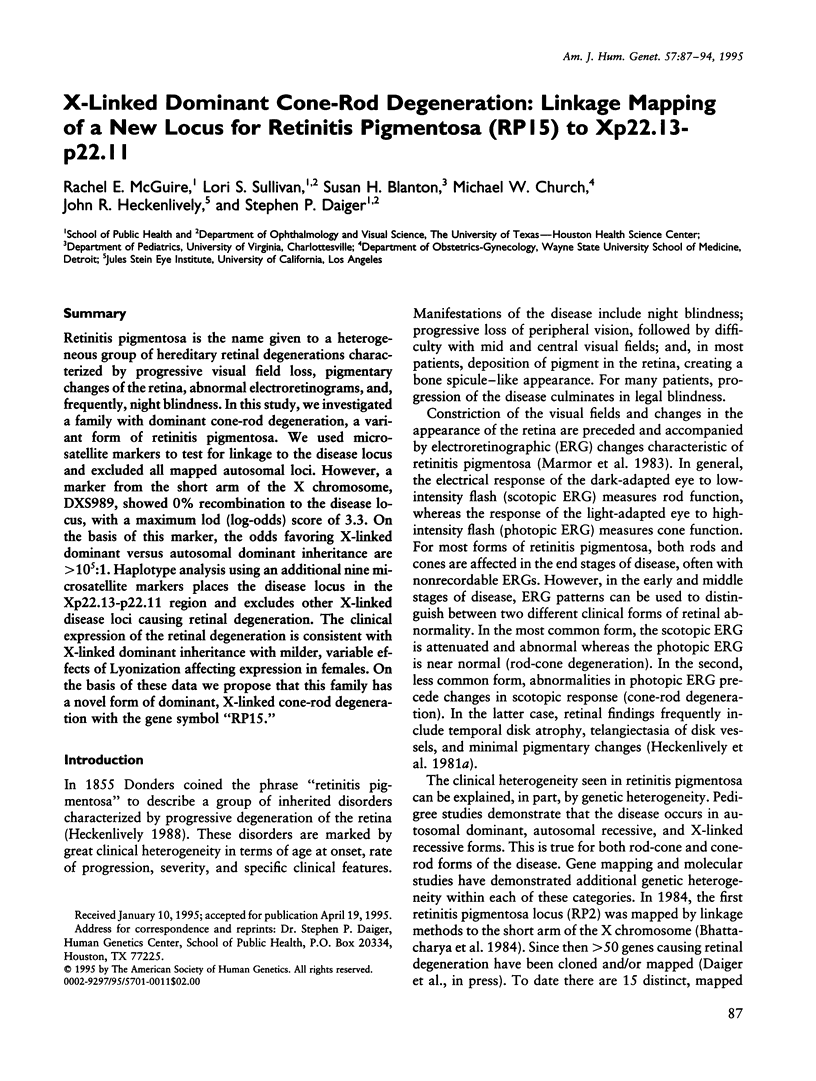
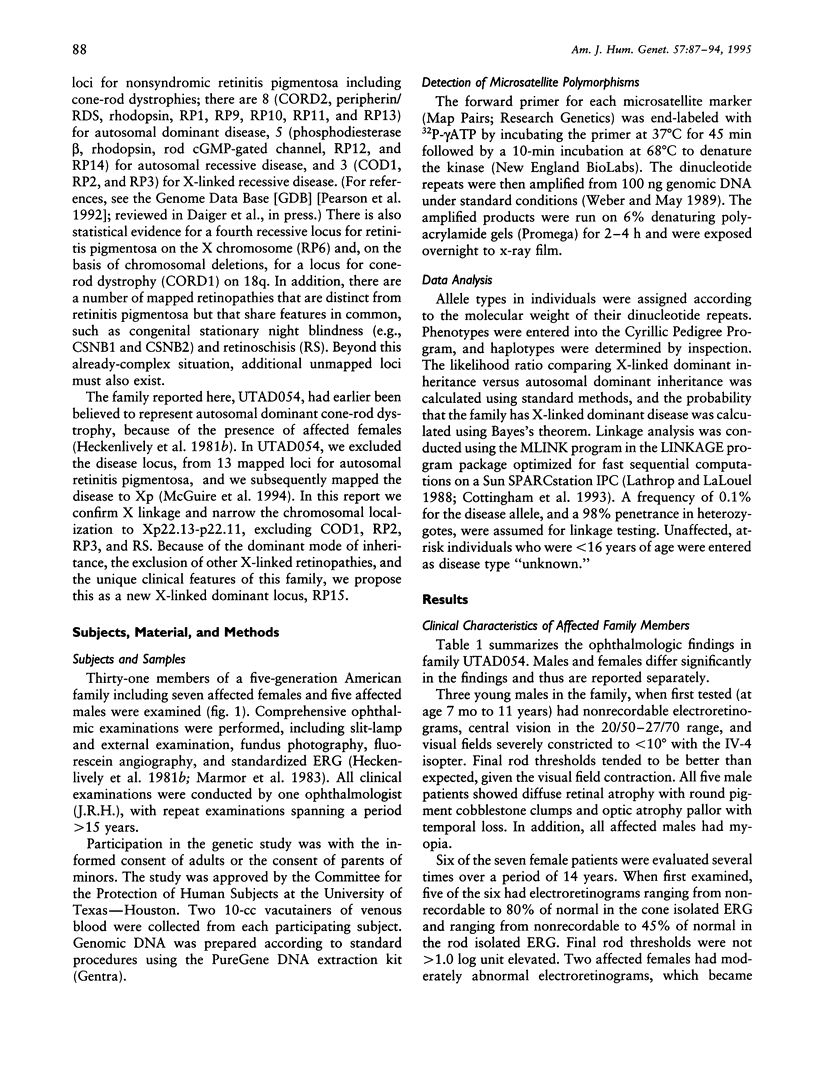
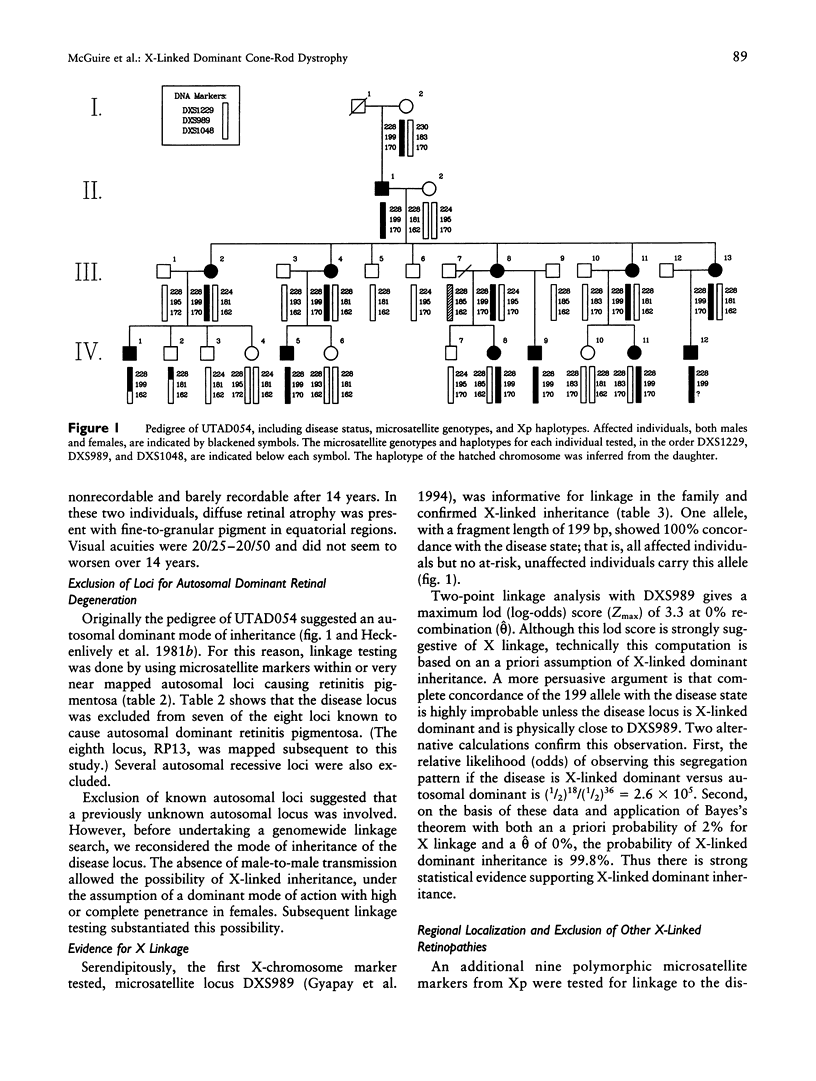
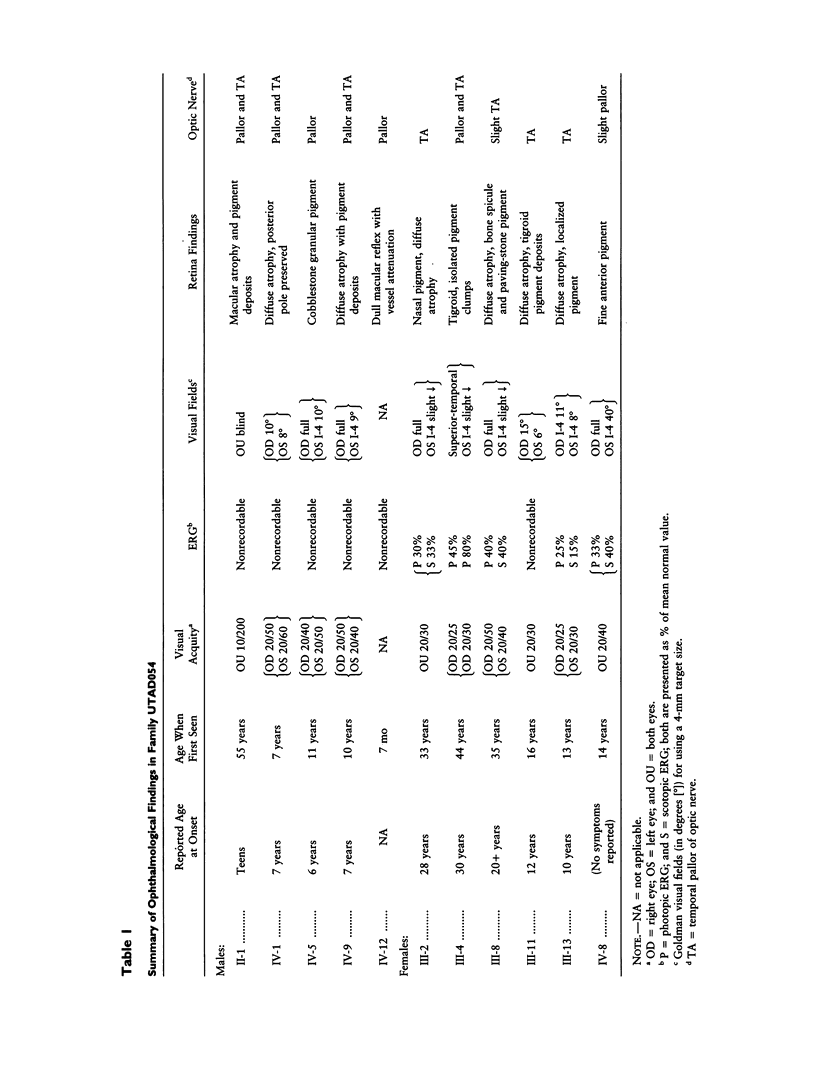
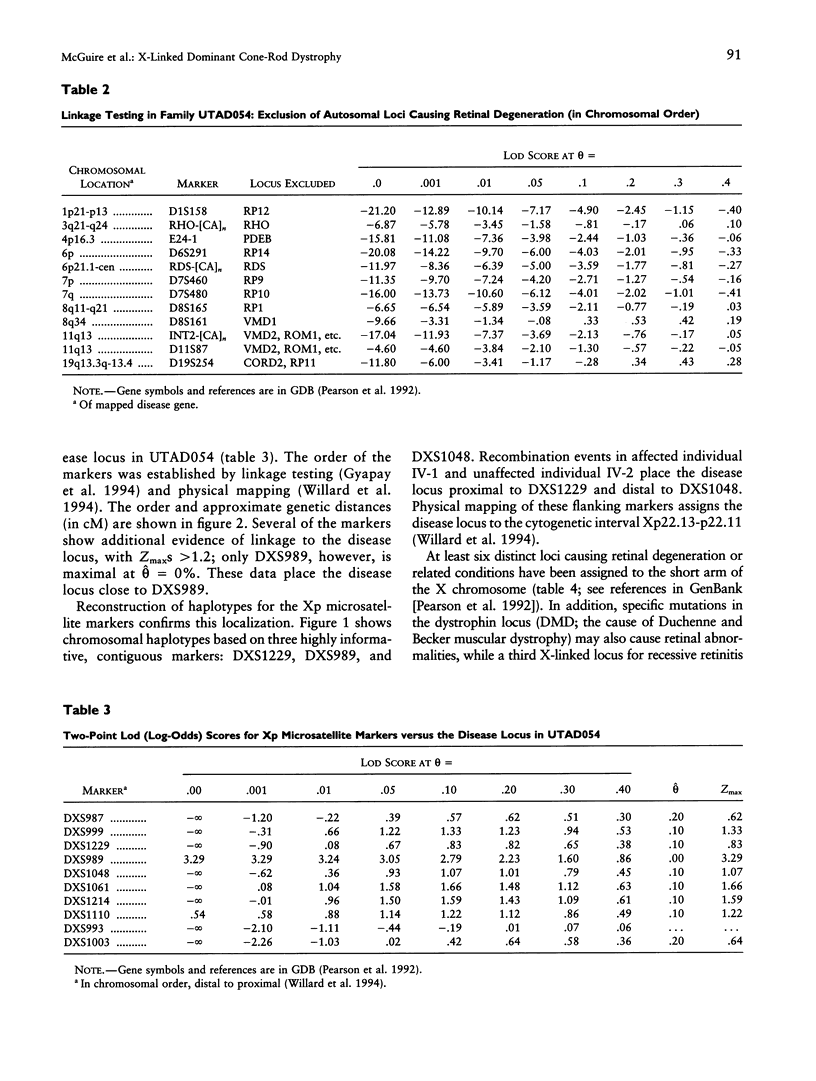
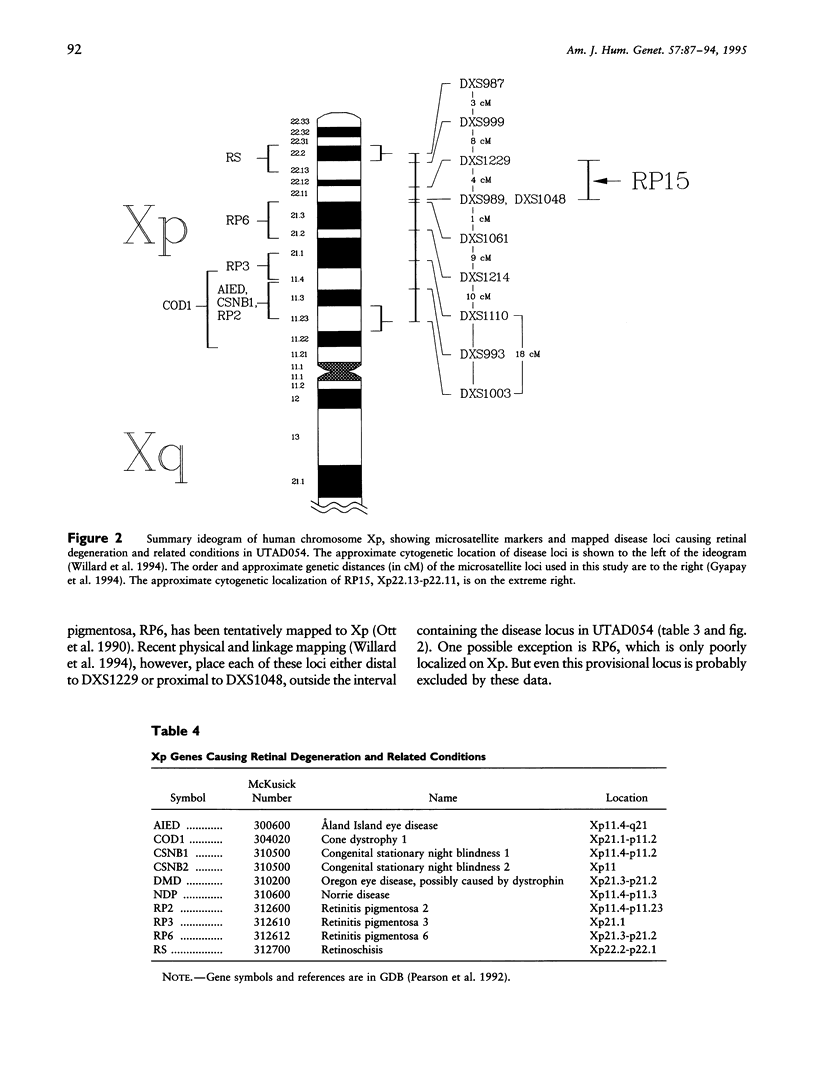
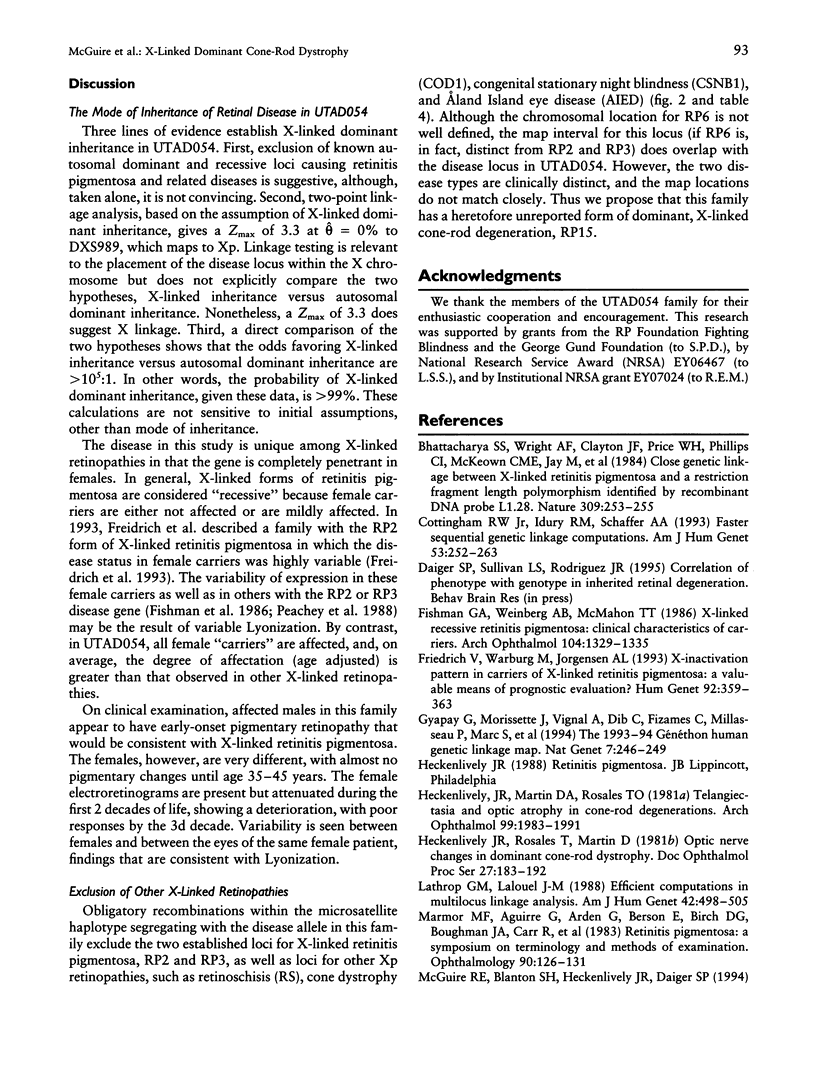

Selected References
These references are in PubMed. This may not be the complete list of references from this article.
- Bhattacharya S. S., Wright A. F., Clayton J. F., Price W. H., Phillips C. I., McKeown C. M., Jay M., Bird A. C., Pearson P. L., Southern E. M. Close genetic linkage between X-linked retinitis pigmentosa and a restriction fragment length polymorphism identified by recombinant DNA probe L1.28. Nature. 1984 May 17;309(5965):253–255. doi: 10.1038/309253a0. [DOI] [PubMed] [Google Scholar]
- Cottingham R. W., Jr, Idury R. M., Schäffer A. A. Faster sequential genetic linkage computations. Am J Hum Genet. 1993 Jul;53(1):252–263. [PMC free article] [PubMed] [Google Scholar]
- Friedrich U., Warburg M., Jørgensen A. L. X-inactivation pattern in carriers of X-linked retinitis pigmentosa: a valuable means of prognostic evaluation? Hum Genet. 1993 Oct;92(4):359–363. doi: 10.1007/BF01247335. [DOI] [PubMed] [Google Scholar]
- Gyapay G., Morissette J., Vignal A., Dib C., Fizames C., Millasseau P., Marc S., Bernardi G., Lathrop M., Weissenbach J. The 1993-94 Généthon human genetic linkage map. Nat Genet. 1994 Jun;7(2 Spec No):246–339. doi: 10.1038/ng0694supp-246. [DOI] [PubMed] [Google Scholar]
- Heckenlively J. R., Martin D. A., Rosales T. O. Telangiectasia and optic atrophy in cone-rod degenerations. Arch Ophthalmol. 1981 Nov;99(11):1983–1991. doi: 10.1001/archopht.1981.03930020859009. [DOI] [PubMed] [Google Scholar]
- Lathrop G. M., Lalouel J. M. Efficient computations in multilocus linkage analysis. Am J Hum Genet. 1988 Mar;42(3):498–505. [PMC free article] [PubMed] [Google Scholar]
- Ott J., Bhattacharya S., Chen J. D., Denton M. J., Donald J., Dubay C., Farrar G. J., Fishman G. A., Frey D., Gal A. Localizing multiple X chromosome-linked retinitis pigmentosa loci using multilocus homogeneity tests. Proc Natl Acad Sci U S A. 1990 Jan;87(2):701–704. doi: 10.1073/pnas.87.2.701. [DOI] [PMC free article] [PubMed] [Google Scholar]
- Peachey N. S., Fishman G. A., Derlacki D. J., Alexander K. R. Rod and cone dysfunction in carriers of X-linked retinitis pigmentosa. Ophthalmology. 1988 May;95(5):677–685. doi: 10.1016/s0161-6420(88)33128-3. [DOI] [PubMed] [Google Scholar]
- Pearson P. L., Matheson N. W., Flescher D. C., Robbins R. J. The GDB Human Genome Data Base Anno 1992. Nucleic Acids Res. 1992 May 11;20 (Suppl):2201–2206. doi: 10.1093/nar/20.suppl.2201. [DOI] [PMC free article] [PubMed] [Google Scholar]
- Retinitis pigmentosa. A symposium on terminology and methods of examination. Ophthalmology. 1983 Feb;90(2):126–131. [PubMed] [Google Scholar]
- Weber J. L., May P. E. Abundant class of human DNA polymorphisms which can be typed using the polymerase chain reaction. Am J Hum Genet. 1989 Mar;44(3):388–396. [PMC free article] [PubMed] [Google Scholar]


